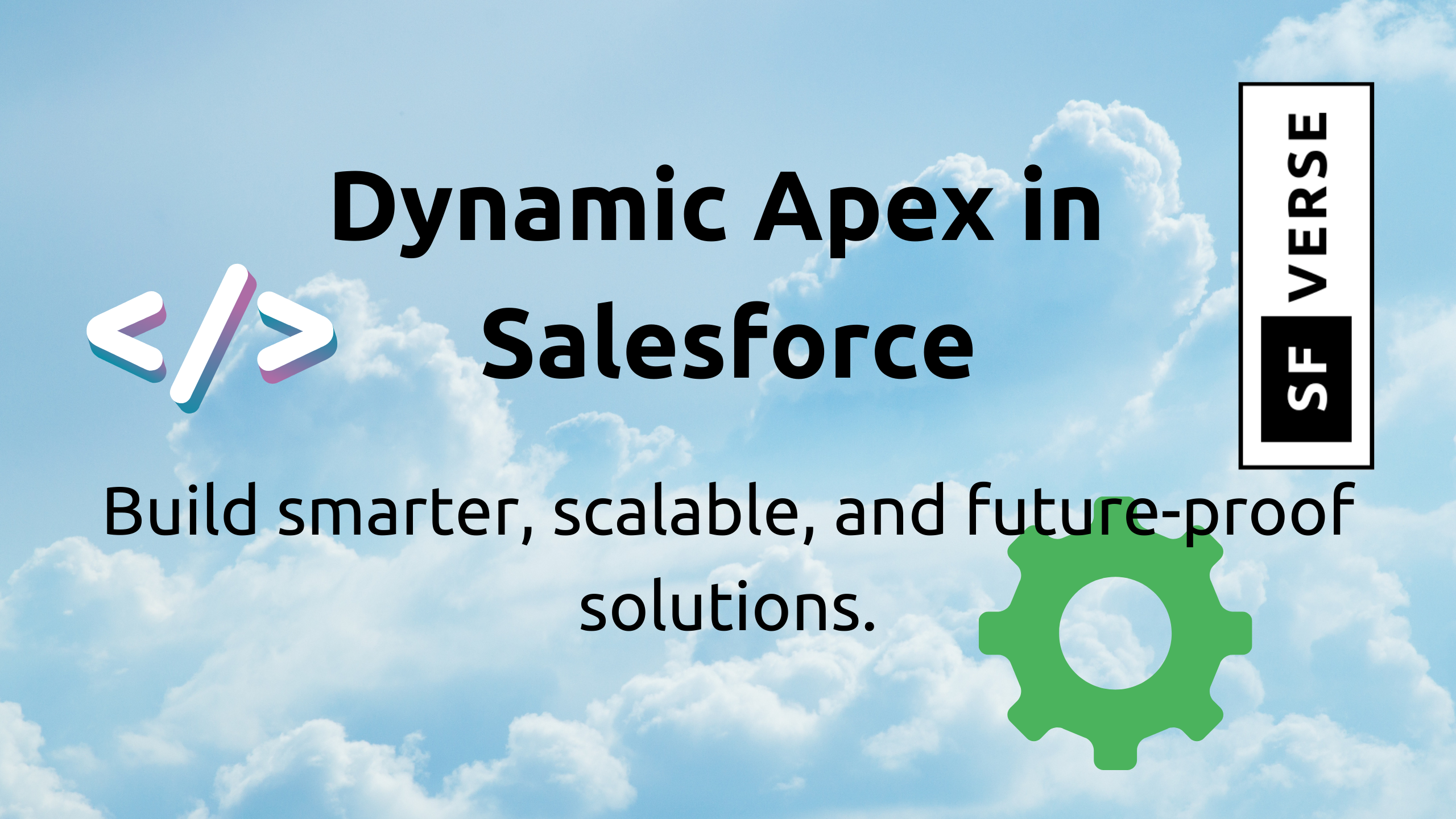Dynamic Apex is a powerful feature of Salesforce that allows developers to create flexible and reusable code by working with the metadata at runtime. In this article we will learn about What is Dynamic Apex and will also see what are the various use cases where dynamic apex can be used.
What is Dynamic Apex?
Dynamic Apex enables a developer to write generic code that can be reused multiple times with different SObjects.
You might be thinking, “Am I just giving you a one-liner definition instead of explaining it?” Let’s understand this with the help of a real-world scenario.
Imagine you’re tasked with developing a form using an LWC (Lightning Web Component). In this form, you need to include the Industry field from the Account object, allowing users to select from the available options. At first glance, this might seem straightforward—you may think of jumping straight into coding.
But that’s where you might fail as a Salesforce developer.
The Catch
Before writing a single line of code, ask yourself:
“Will the options that the user sees be subject to change in the future?”
This is the key to becoming a better Salesforce developer. Instead of hardcoding the list of options in your JavaScript, leverage the power of Dynamic Apex to fetch the picklist values for the Industry field from the Account object.
By making this design decision, you’ve future-proofed your code. Now, if the available values for the Industry field change in the future, you won’t need to modify your codebase—it will adapt automatically.
Dynamic Apex Usecases
We just explored one use case that demonstrates the power of Dynamic Apex. Here is a list of what we can achieve using Dynamic Apex.
- Fetch API Names of all objects.
- Check Object permission for the logged In User.
- Fetch all fields of an object.
- Dynamic SOQL.
- Dynamic DML.
- Fetch Picklist Field values to avoid hardcoding.
- Fetch Record Types.
- Fetch Field Sets.
- Fetch required fields API Name of an Object.
Conclusion
Dynamic Apex empowers developers to create scalable, flexible, and future-proof solutions by leveraging metadata and runtime capabilities. By using it effectively, you can avoid hardcoding, enhance maintainability, and adapt seamlessly to changing business requirements.
We will cover all the use cases mentioned above in coming articles. So keep checking this space.

